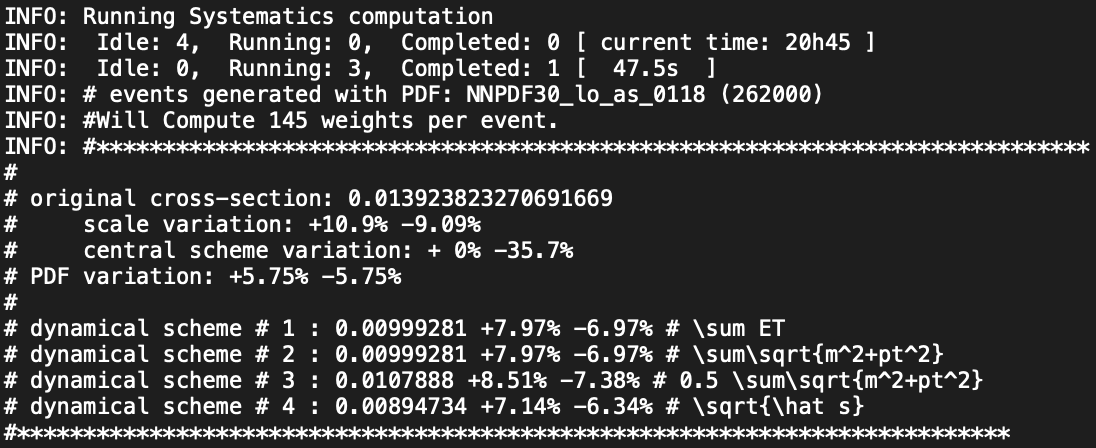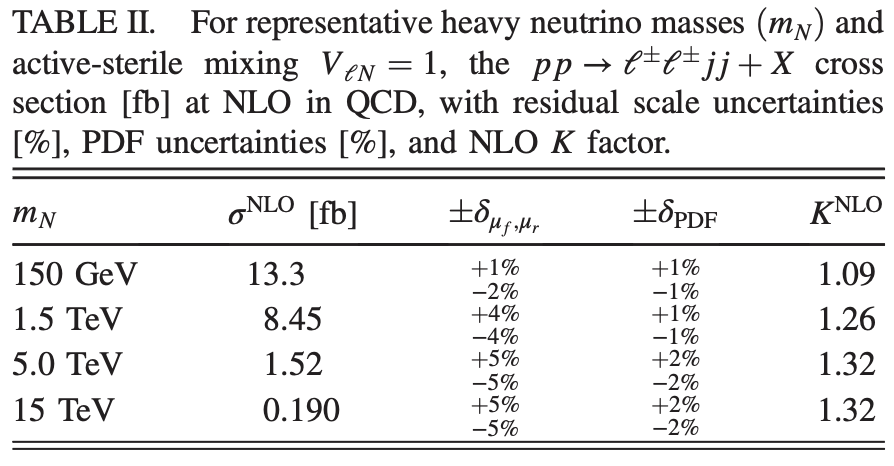RE: Citizen science on Hive - simulation of a neutrino signal at CERN’s Large Hadron Collider with its uncertainties
You are viewing a single comment's thread:
You were right about this week's tasks, everything went smoothly as if I was doing an extension of the tasks of previous episode. I was able to get these results for the mass (1000 GeV) of the heavy neutrino considered:

The run time for the scan (I used the same points from episode 5) took longer than the previous simulation. Here's the plot I got from the masses considered:

I'd be able to write my progress report tomorrow, as I am done with the simulations already. Just a question, I checked our reference paper regarding the reporting of the scale and PDF variations. Do the values on the third and fourth columns in the table correspond to the addition in quadrature of the scale and PDF variations, respectively?

Glad to read that you are already done. Will you be faster than @agreste this time? And what about @eniolw and @gentleshaid? Please tell us where you all stand!
Note that the error bars are missing. You may need to upgrade your python script ;)
In the paper, we quoted them separately. The third column corresponds to scale variation uncertainties, and the fourth one to PDF uncertainties. In the figure, only scale uncertainties are accounted for. However, we must be careful that predictions in the article correspond to next-to-leading order ones (NLO), which is precisely what we will do in the next episode, and compare them to the leading order ones (LO) that we dealt with this week.
I recall that LO and NLO refer to where we truncate the perturbative series mentioned in the blog (LO = first term; NLO = second term).
Cheers!
I have already done the calculations. I have to start writing the report. Maybe it will be ready today, depending on how complicated my work day is going to be.
I am pleased to read this, and I am looking forward for the results. Unfortunately, it will be too late to grab something to show at HiveFest. However, I have taken what you achieved in the previous episode. This will be shown! ^^
Thank you! And best of luck at the HiveFest!
You are welcome!
Hi! Thanks for the reminder. I will do my report in due time. I'm pretty busy.
Great! I am looking forward to read it! Note that I can help if needed ^^
Again, @agreste was faster! 👏🏻 I was a bit tired yesterday from work and classes (I enrolled this semester haha 😅) that I had to delay the writing for a day. I am not sure if I got the values for the error bars correctly, I manually recorded the error from the log of the terminal during the scan. I checked @agreste's for comparison and I noticed that the values I got are really small or is it expected?
I almost forgot about it!
This confused me a little, is this figure the table I got from your paper?
I noticed this. I have open both posts in my browser, and I will review them while in the train to Amsterdam tomorrow (or maybe tonight although there is little chance, as I don't have much time). I will check out what you did for the error bars and comment on this.
Normally, you should get errors that vary depending on the heavy neutrino mass, and in the ball park of 10%. Much smaller errors are expected when moving to NLO, as we will see in the next episode.
The numbers in the table can be extracted from the figure (in fact we did the opposite: we started from a much bigger table and made the figure).